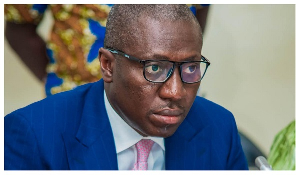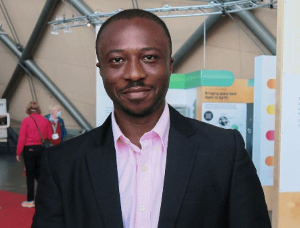By: Dela Ahiawor (deljason3000@yahoo.com)
This year’s Africa Cup of Nations host, Equatorial Guinea offers Ghanaian football fans a unique opportunity to explore more off-field thrills. A visit to the Island of Bioko, the provenance of Ghana’s major agricultural export and much- vaunted cash crop (cocoa) is simply irresistible.
Actually for many Ghanaians, it’s certain that Bioko would evoke a historical flashback of Tetteh Quashie’s stint on the Islet, in the dim and distant past of the 19th century. Secondly, it also provides the opportunity to step back in time, circa (1879) to relive the legend of how cocoa (Theobroma Cacao) was first introduced to the Gold Coast (now Ghana).
The Legend
Truly, Ghana and Bioko share a strong affinity that stems from the legend of cocoa in Ghana. According to indigenous Ghanaian oral history -Tetteh Quashie, a pre- independence agriculturalist was the first to introduce cocoa to the Gold Coast from the Island of Fernando Po. Though this claim was contested by other parties, the Gold Coast Board of Education gave closure by granting Tetteh Quashie the bragging rights to the commercial cultivation of cocoa in the Gold Coast.
To illustrate this point further, history also states that Tetteh Quashie had a stint (1870-1876) in Fernando Po, for greener pastures; where he discovered cacao smack in the middle of the Island’s pristine rainforest. After the discovery, he beat a retreat home with a few smuggled Amelonado cocoa pods (there are other versions of this story) to start a farm at Akwapim – Mampong, his adopted home. The ‘kinship’ between Ghana and Fernando Po, with regards to cocoa is thus clear.
Live and Learn
Factually, one of the first places in Africa to cultivate cocoa was Fernando Po. It’s also true that Ghana’s cocoa has an age-old association with the Island of Fernando Po - hence the familiarity with the moniker, ‘Fernando Po’ in Ghana. On the contrary, ‘Bioko’ is likely to evoke a double take among many Ghanaians, with reference to the origin of cocoa in Ghana.
But it’s refreshing to be reminded that the colonial Island called Fernando Po is now (Bioko) – part of the Spanish–Speaking Central African country of Equatorial Guinea.
Without any question, the Island of Bioko can be described as the “ancestral home” of Ghana’s cocoa. In fact, there are several close on second (2nd) century heirloom cocoa crops still subsisting on abandoned plantations in modern day Bioko – mainly “ancestral species” suited for West Africa and South America, that is: criollo, Trinitario and Forastero.
Other principal crops, including coffee and timber also exist, but every thing considered, Bioko can be described as a tiny Island with an endemic fauna and flora of all kinds. Genuinely, Bioko can be described as nature –lovers’ wet dream, because of its virgin flora. For this reason, it has been christened, the Galapagos (Ecuadorean Island renowned for its biodiversity) of the Gulf of Guinea, by naturalists.
This obviously makes the Island one of the greenest, biologically endowed and naturally scenic places in Africa for researchers and eco-tourists. With regards to tourism, the Island is ready to usher this year’s Africa Cup of Nations (AFCON 2015) competitors and their fans, into its inner sanctum through its Capital City, Malabo – located on the northern coastline.
As one of the four host cities, Malabo - for that matter, the Island of Bioko would host four (group D) contenders for the ultimate African title, namely: Ivory Coast, Guinea, Cameroon and Mali. And the city’s 15,000 capacity Nuevo Estadio De Malabo (Malabo new stadium) would serve as venue for nine fixtures (matches) during the tournament. The remaining fixtures would take place in Bata, Mongomo and Ebebiyin - all located on mainland Equatorial Guinea.
The Lay of the Land
On the other hand, the Island of Bioko (Malabo) is one of the main territories that constitute the nation of Equatorial Guinea. It’s the largest of the four Islands in the Gulf of Guinea archipelago, rectangular in shape; with spectacular volcanic and mountainous scenery.
The Islet is also the northernmost province which is separated from the mainland - located 20 miles off the west coast of Africa (Cameroon).With regards to area, it’s approximately 800 square miles in size - with a population of about one hundred and thirty thousand people.
In conclusion, Bioko offers a quintessential African adventure to tourists because of its verdant tropical rainforest.
Sports Features of Monday, 12 January 2015
Source: Dela Ahiawor














